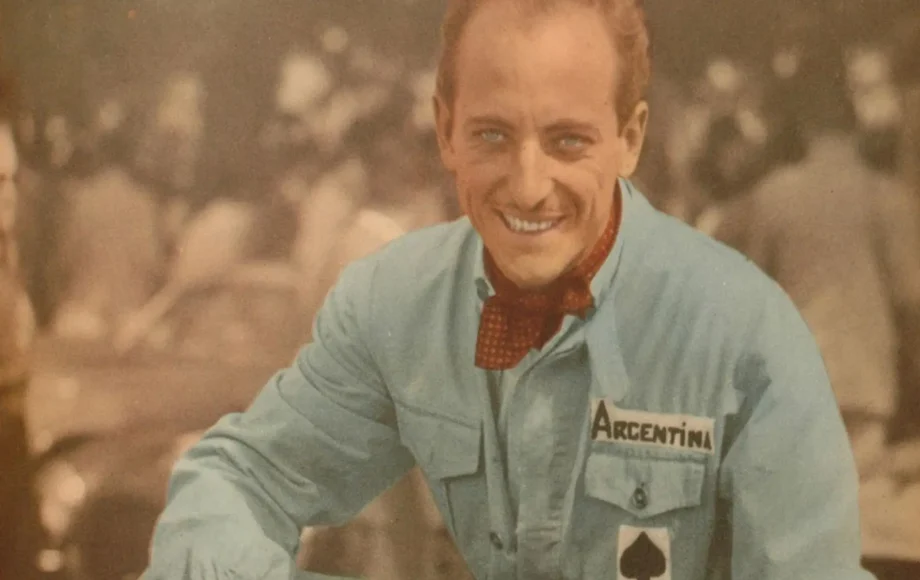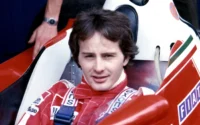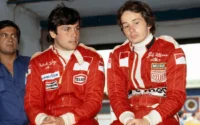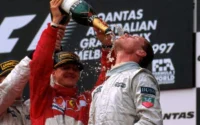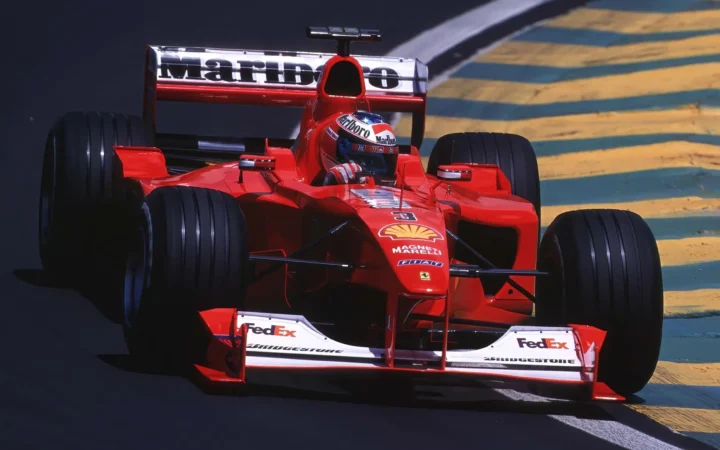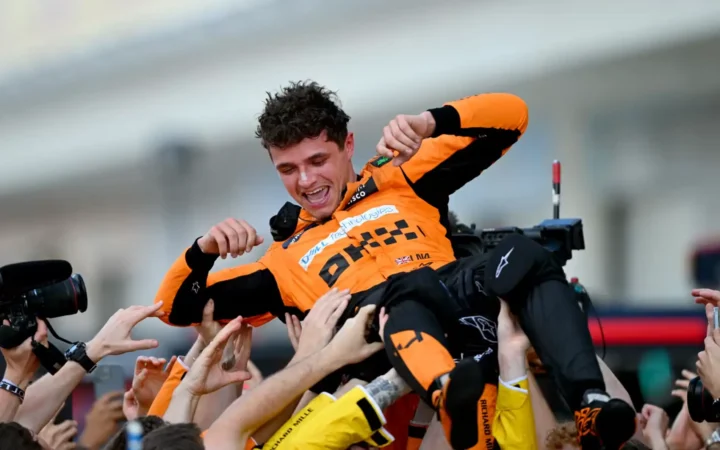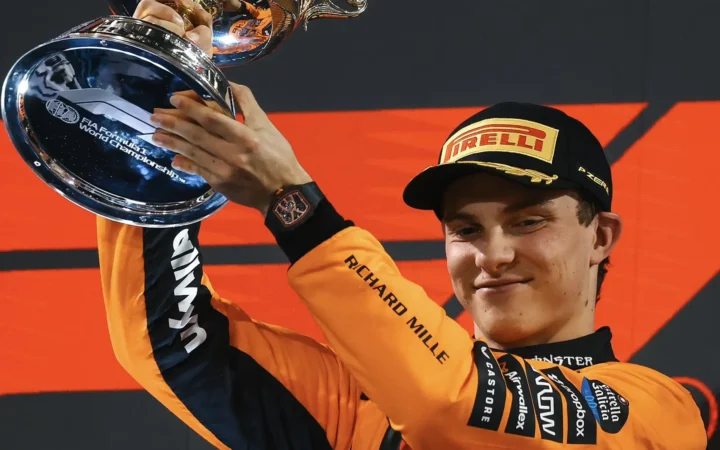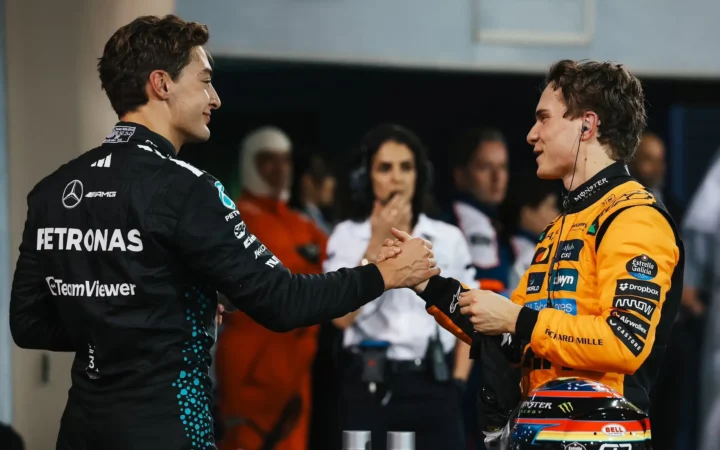What happened on this day, December 3 in Formula 1 history? Find out interesting facts and stories about Formula 1 on this day.
1924
Roberto Mieres, born on this day in Mar del Plata, Argentina, saw moderate success in his 17 Grand Prix entries between 1953 and 1955. He began racing MGs with friends, eventually founding a small racing club. Noticing his talent at one event, legendary racer Alberto Ascari encouraged him to try racing in Europe. Mieres impressed before financial issues forced him back to Argentina, but he returned to Europe in 1954, securing fourth-place finishes in Switzerland and Spain. His best season came in 1955, highlighted by three top-five finishes, including fifth in his home Grand Prix. Mieres did not return to Formula One but continued racing locally and even represented Argentina as a yachtsman in the 1960 Rome Olympics.
1932
Sicilian nobleman Gaetano Starrabba was born on this day in Palermo. With a personal fortune allowing him to indulge in motorsports, Starrabba raced Maseratis and Ferraris for pleasure. In 1961, he purchased a Lotus, outfitted it with a Maserati engine, and entered a handful of non-championship races. He took part in his only Formula One World Championship race at Monza, where he qualified 30th out of 32. Running 15th, his engine failed just before the race’s halfway mark. Starrabba continued racing his Lotus/Maserati hybrid in non-championship events for several years, achieving his best result with a fifth-place finish at the 1963 Rome Grand Prix. Ultimately, he preferred sports car racing and retired from the scene in 1969.
1997
Bernie Ecclestone agreed with Hollywood star Sylvester Stallone to bring Formula One back to the US for the first time in nearly a decade. Stallone planned to film scenes during practice sessions and the race itself, which would then be incorporated into an upcoming film based on F1. The race was initially scheduled for 1999 in Las Vegas, but the deal ultimately fell through, and it wasn’t until 2000 that the US Grand Prix was revived. Writing for The Times, Kevin Eason commented, “The plan seemed to be working, and Stallone had become a fixture in the F1 paddock, conducting research—or at least strutting around with an entourage that looked like extras from Goodfellas. However, ‘Sly,’ as we affectionately called him, quickly became such a distraction that his celebrity charm faded, and mechanics barely looked up when he entered their garages.” Eason humorously noted that Stallone looked as much like an F1 driver as Les Dawson, and Americans were rare in the sport. Eventually, Ecclestone, not known for his artistic leanings, grew uneasy and told Stallone that F1 wasn’t interested in becoming a Hollywood spectacle—at least not with him in the lead role.
1997
Amid Bernie’s Hollywood venture, the European Union announced a sweeping ban on tobacco advertising in sports, ending nine years of negotiation. Though the British government supported the ban, it advocated for a six-year exemption for Formula One, warning that without it, F1 might relocate to Asia, risking thousands of jobs. Despite the concerns, F1 remained in Europe.
2006
Len Sutton passed away on this day at age 81 after a prolonged battle with cancer. He was an American racing driver who competed in the USAC Championship Car series from 1955 to 1965, with his Indianapolis 500 entries in 1960 and earlier counting toward the Formula One championship. Although Sutton never managed to finish the Indy 500 while it was part of the F1 calendar, he achieved a career highlight by finishing second in the 1962 Indianapolis 500. He missed the 1957 Indy 500 due to severe injuries sustained during practice when his car flipped and skidded nearly 300 meters upside down, resulting in a fractured skull, broken shoulder, and serious back injuries; however, he returned to compete the following year. Sutton retired permanently from racing in 1965 following an accident at Langhorne Speedway in which fellow driver Mel Kenyon was severely burned. After stepping away from the track, Sutton began broadcasting with the Indianapolis Motor Speedway Radio Network, where he worked until 1972.
2007
Lewis Hamilton earned a nomination for the BBC Sports Personality of the Year award, reflecting his impressive achievements as a rookie in the 2007 Championship. However, despite a remarkable season, he ultimately finished as runner-up in the awards, which echoed the outcome of his 2007 Drivers’ Championship campaign, where he also narrowly missed out on the top spot. Hamilton lost to boxer Joe Calzaghe, whose performances and undefeated record had captured the public’s attention that year. Although he didn’t take the award, Hamilton’s nomination showed his growing influence and status as one of the most talented and promising drivers in Formula One, one that would be realised later after achieving a record-equalling seventh title in 2020.
2009
On this day in 2009, Sauber announced it would return to Formula One for the start of the 2010 season. This marked the team’s re-entry into the sport after BMW withdrew from F1, leaving Sauber without a title sponsor or a clear path forward. Following the withdrawal, founder Peter Sauber took back control of the team, ensuring its survival in F1.
F1 Driver Birthdays 3 December
| Birthday | F1 Driver |
|---|---|
| 3 December 1924 | Roberto Mieres |
| 3 December 1932 | Gaetano Starrabba |
F1 Driver Deaths 3 December
| Death | F1 Driver |
|---|---|
| 3 December 1996 | Norm Houser |
| 3 December 2006 | Len Sutton |
| 3 December 2011 | Rob Schroeder |
Seen in:

